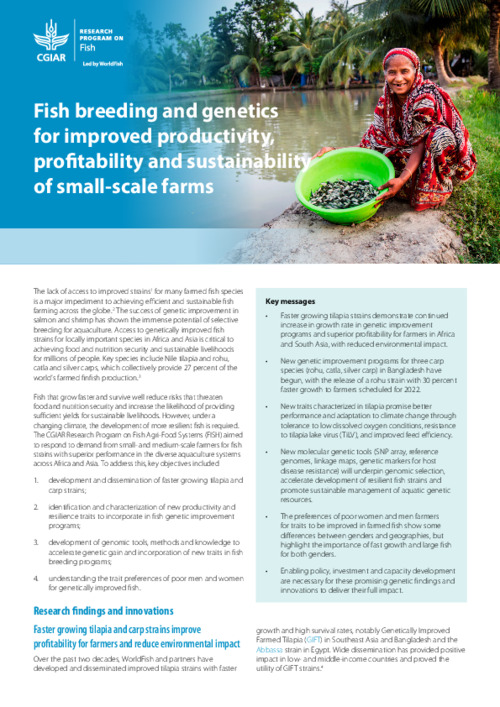Fish breeding and genetics for improved productivity, profitability and sustainability of small-scale farms

Faster growing tilapia strains demonstrate continued increase in growth rate in genetic improvement programs and superior profitability for farmers in Africa and South Asia, with reduced environmental impact.
New genetic improvement programs for three carp species (rohu, catla, silver carp) in Bangladesh have begun, with the release of a rohu strain with 30 percent faster growth to farmers scheduled for 2022.
New traits characterized in tilapia promise better performance and adaptation to climate change through tolerance to low dissolved oxygen conditions, resistance to tilapia lake virus (TiLV), and improved feed efficiency.
New molecular genetic tools (SNP array, reference genomes, linkage maps, genetic markers for host disease resistance) will underpin genomic selection, accelerate development of resilient fish strains and promote sustainable management of aquatic genetic resources.
The preferences of poor women and men farmers for traits to be improved in farmed fish show some differences between genders and geographies, but highlight the importance of fast growth and large fish for both genders.
Enabling policy, investment and capacity development are necessary for these promising genetic findings and innovations to deliver their full impact.
Permalink
Date Available
Type
Publisher
Countries
Copyright
CC-BY-NC-4.0
Research Themes
Language